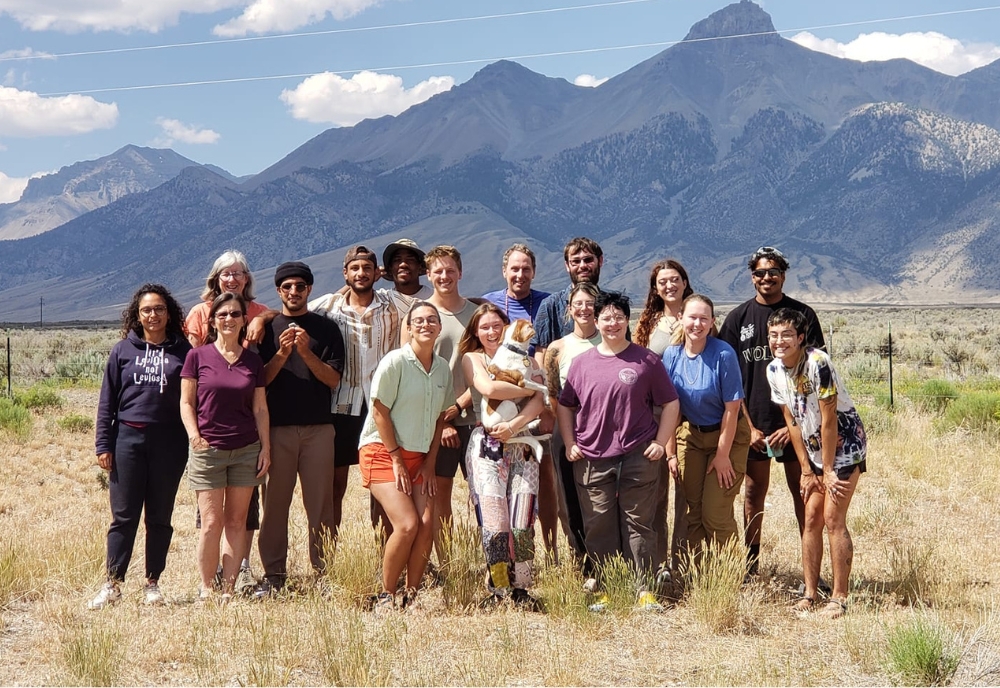The School of Geosciences has broken new ground in offering students hands-on learning experiences at its recently opened field site in Idaho, made possible through donor funding.
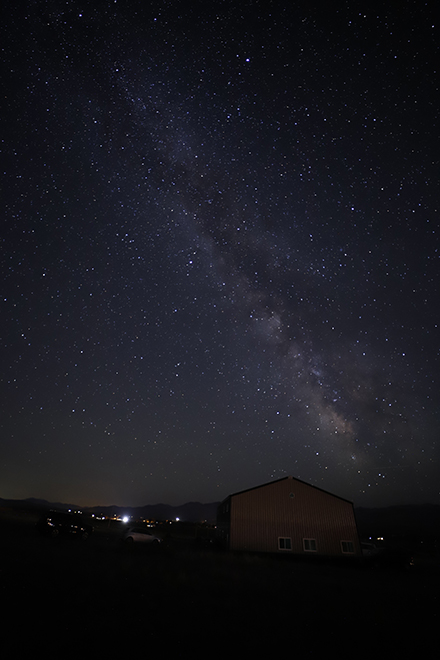
A view of The Milky Way over the field station building. (Photo courtesy of Judy McIlrath)
Geology faculty conducted three two-week field sessions this past summer at the first-ever permanent field station for its Geology Summer Field School.
Prior to breaking ground on this new site in August 2023, field school sessions were held at rented locations, posting a challenge due to rising costs and limited research time.
The new permanent field station facility, located in Mackay, Idaho, offers a consistent and enriching learning experience for students, and also includes six restrooms, a functional kitchen, and two sheds for faculty and equipment.
“While still a work in progress, the station is on its way to becoming a state-of-the-art research facility, thanks to the generous contributions from donors supporting the future success of geology students,” explained Angelika Hart, academic program specialist for geosciences.
The field school is split into five unique sessions, including field hydrogeology, coastal geology, intro to mapping with volcanology, structural mapping, and field geophysics.
In each session, students are mentored in a different research setting by faculty who specialize in that discipline while honing vital geology skills.
Professors Sarah Kruse and Chuck Connor are using the field station to solve research questions about how individuals could one day inhabit the moon. They are funded by NASA on a five-year project to develop better ways to find and map lava tubes, caves formed in lava flows during volcanic eruptions.
“The USF field station is near many world-class lava tubes that formed in the last
few thousand years,” Connor explained.
In August the pair worked at the field station with five undergraduates and two graduate
students to explore new methods to map lava tubes using a combination of geophysical
methods that one day astronauts may use on the moon.
“For students in the Earth sciences, the experience of seeing and studying features in the field simply can't be replicated by reading about it. Participation in field work and hands-on learning experiences give students a sense of belonging in the sciences and ownership of the work they are contributing to,” Kruse added.
She’s been teaching the two-week long field geophysics course for more than 15 years in a variety of locations, but finds this new permanent site provides answers to many logistical challenges she had previously faced.
“We have come a long way from the days of camping while teaching and recharging equipment at night through generators!” she emphasized. “The permanent station with its cooking facilities and space to work indoors offers students a comfort level that lets them focus on hands-on learning. In that sense it's also an equalizer, as students new to camping or field work are not at such a disadvantage.”
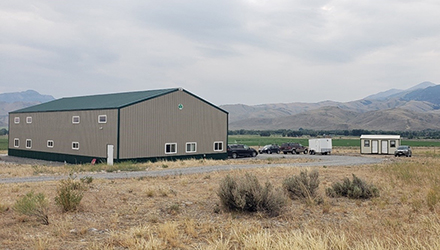
New storage sheds at the field site in Idaho. (Photo courtesy of Judy McIlrath)
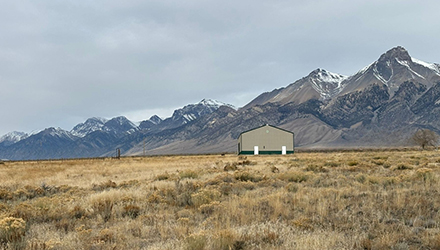
The field station’s location provides students with access to a variety of rocks, fault lines, and geological formations. (Photo courtesy of Danny Lindsay)
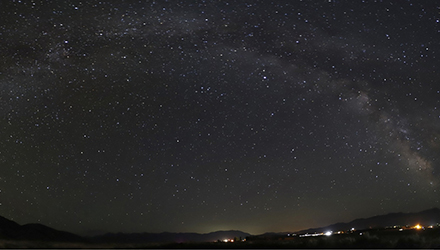
The field station is located an hour away from the Central Idaho Dark Sky Reserve with spectacular night views. (Photo courtesy of Judy McIlrath)
She added that the large open layout of the building aids in supporting a sense of collaborative activities, while also offering opportunities for smaller group work among students.
“The location is visually stunning, between Idaho's Lost River Range and White Knob Mountains. The sun sets over the valley in between. Quite a counter-example to the geologic terrain offered by Tampa,” Kruse said. “Florida is almost entirely sand and limestone. Beautiful, but just a sliver of what the Earth offers. From the field school we can study volcanic features, the trace of the massive Yellowstone hot spot, earthquake-producing faults, and a myriad of other structures produced by plate tectonic activity.”
She is excited at the prospect of this site becoming a state-of-the-art facility in the future.
“The location provides incredibly convenient access to Craters of the Moon National Monument, where students have been collecting world-class geophysical data on the internal structure of volcanic cinder cones. I'm particularly excited about opportunities on the USF land to collect long-term data sets on seismic and infrasound activity and groundwater, against which we can test new theories and methods,” she added.
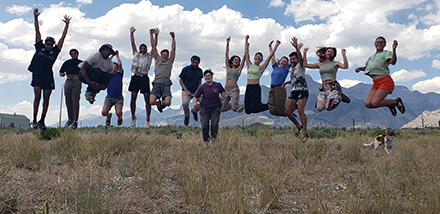
Geophysics Field Camp students celebrate the successful completion of camp. (Photo courtesy of Judy McIlrath)
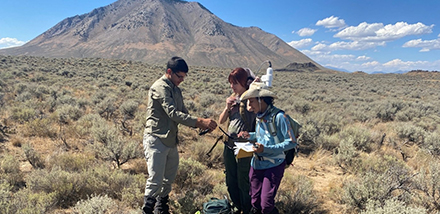
Gavin Martinez, Bianca Hayes, and Gabriella Jean-Baptiste preparing to collect a magnetic survey over a lava flow with a fissure in Idaho. (Photo courtesy of Dr. Sarah Kruse)
Alumnus Alain Volentik, who earned his PhD in geology in 2009, was one of many donors who contributed to the growth of this new station.
“Field experience is crucial in the education and training of a geoscientist,” he said. “The more rocks one sees, the better geoscientist one becomes. I hope every undergrad will have the opportunity to participate in the field camps. [It’s a] great opportunity to create bonds for life with fellow students, along with faculty members, and I hope it provides the perfect environment for students to focus 100 percent on learning, without having to think about logistics.”
Learn more about supporting the School of Geosciences field camp by contacting Kelly Addington, (813) 974-5764.
